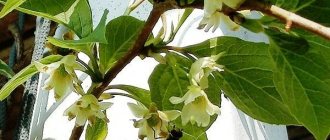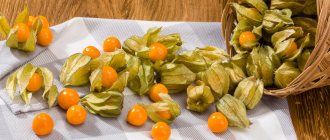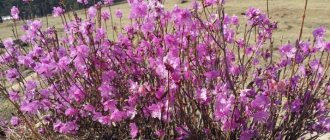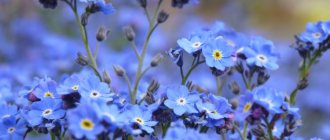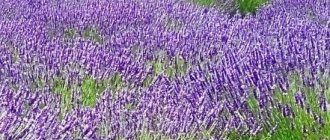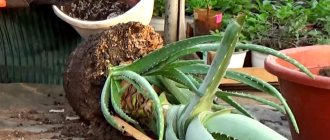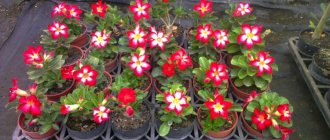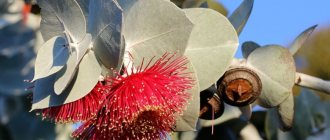Rhododendrons are ornamental, beautifully flowering shrubs of the Heather family, including more than 600 varieties of deciduous and evergreen forms. Rhododendrons came to gardens around the world from China, Japan, Korea, and some species grow naturally in the Caucasus, North America and Australia. IN
1854, during the expedition of the frigate "Pallada" to Southeast Asia, naval officer Alexander Egorovich Schlippenbach discovered a deciduous form with soft pink flowers, which later became the golden fund of landscape designers around the world and received his name.
Schlippenbach rhododendron will decorate the garden with soft pink blooms
Biological description
According to the botanical description, Rhododendron Schlippenbach has bell-shaped flowers with a diameter of 8-15 cm, rarely single, often collected in panicles of 3-6 pieces, sometimes blooming before the leaves. In modern varieties, the main color of the petals is pale pink, deep pink, white-pink, soft orange, soft carmine, white with purple specks at the base of the petals.
The flowering period in the Moscow region begins in mid-May, in Latvia and Finland in late May-early June and lasts 14-20 days, then boxes with small seeds are formed.
Important! Rhododendrons are poisonous plants due to their neurotoxin content, so you should not brew tea or prepare infusions and decoctions from their flowers and dried leaves.
Outstanding successes in the selection and cultivation of rhododendrons have been achieved at the University of Helsinki, whose botanical garden contains a collection of shrubs with high winter hardiness, and the Helsinki University variety tolerates frosts down to -40 °C.
Variety "Helsinki University"
Root system
In nature, the Schlippenbach rhododendron shrub is small in height, up to 60 cm, and it settles on dry rocky mountain slopes, which is why it is sometimes called the Alpine rose. Higher specimens (2-3 m) are found on the edges of forests with well-permeable soils. The rhododendron root is superficially creeping at a depth of 6-10 cm with a large number of small suction roots. Therefore, the crop cannot tolerate drying out of the soil.
Trunk and leaves
The stem and branches of the Schlippenbach rhododendron are bare, and a rosette of elongated shiny leaves with a smooth or slightly wavy edge is located at the very top. The shrub is not characterized by rapid growth; in one season it grows by 4-10 cm and at 10 years its height does not exceed 1 m.
Schlippenbach rhododendron bush at 10 years old
Care
Rhododendron loves moist soil, but also does not tolerate stagnant water. The soil in which it grows must be well drained. On dry days, watering is carried out abundantly, two to three times a week.
Feeding young annuals is done in the spring, before flowering begins and after it ends. Complex fertilizers with low concentrations are best suited for this.
For adult plants, special fertilizers for rhododendrons are more suitable.
They have a long-term effect, so they are applied once, in early spring. In addition, a little organic matter such as mullein or compost will also provide the plant with additional nutrition.
Pruning is done in May, but very carefully, as this negatively affects the quality of flowering and the growth of the plant as a whole.
Rhododendrons have good winter hardiness Mature bushes only need to mulch the soil and bend the branches to the ground at the first sign of soil freezing.
The Martagon lily also has excellent winter hardiness and can decorate any corner of your garden.
Reproduction methods
Caucasian rhododendron in the mountains: when to bloom
Reproduction of rhododendrons is possible vegetative and seed. To preserve varietal qualities, cuttings and rooting of layering are used. In order to develop a new variety or hybrid, seeds cross-pollinated with the desired species are sown.
Vegetative method
Within 3-4 weeks, the shoots produce roots in a substrate with peat, humus from pine needles and sand, which is taken in half the amount of other ingredients. For rooting, you can take the branched tips of the shoots without dividing the branches. They root better than individual cuttings.
Shoot tip for rooting
Temperature
Shoots and cuttings can be rooted at the end of summer in open ground or in a greenhouse in February. The optimal air temperature for rooting is 16-24 °C, air humidity is close to 100%. If it is difficult to maintain such a temperature in the greenhouse in winter, it is enough for the substrate to be heated to 10-12 °C.
Propagation by cuttings
Individual cuttings from 5 to 15 cm long are planted in August on the garden bed in rows with a distance of 15-20 cm, 8-10 cm between cuttings. Watering is carried out daily, possibly with a sprinkler. Container rooting is practiced in the greenhouse. The cuttings are buried 2-3 cm in cups with substrate and covered with glass jars or plastic bottles.
Rooting cuttings in a container
The plants are ventilated every day for 30-40 minutes, the soil in the container is slightly loosened to avoid the proliferation of mold fungi and putrefactive bacteria. A signal of successful rooting is the beginning of the growth of new leaves on the shoot.
Reproduction using taps
Rhododendron is easy to propagate vegetatively in the garden. To do this, after flowering, select the lowest branches, bend them to the ground and pin them with a wire staple so that the whorl with branching shoots is underground. It is sprinkled with peat on top and moistened every 4-5 days. In autumn, the shoot is cut off from the mother plant with pruning shears and dug up so as not to damage the roots.
Place in landscape design
Favorite neighbors of rhododendrons are ferns, hostas, and other flowering shrubs. Plants are good in Japanese gardens among stones, in the shade of conifers.
Rosewood bushes are planted alone and in an alley, on the shore of a pond and near a gazebo, in rock gardens and mixborders. Rhododendron will look elegant and impressive everywhere.
Rhododendron is a typical shrub for acidic soils. This plant belongs to the Heather family and is one of the most beautifully flowering. Many summer residents want to grow rhododendron on their property, but this plant cannot be called unpretentious. Rhododendrons love warmth. To take root in the middle zone, they need proper agricultural technology and good care.
In the climatic conditions of the middle zone, about ten proven plant species can be grown. All of them have high winter hardiness.
There are several hundred species of rhododendrons, representing plants of various sizes and shapes - from creeping to tall. There are deciduous and evergreen rhododendrons. In nature, they grow in the mountain forests of the Caucasus, Carpathians, and Sayans. The homeland for many species is the Far East, including Kamchatka and the Kuril Islands. A huge variety of rhododendron species is represented in China and India.
Mountain slopes covered with flowering thickets are an unforgettable sight. All species have large flowers, which are even more noticeable due to the fact that they are collected in inflorescences with bright and clean colors.
Rhododendrons are often called azaleas. Both of these plants belong to the Heather family and are included in the genus Rhododendron. The difference is that indoor deciduous rhododendrons are called azaleas. There are azaleas that keep their leaves all year round - Japanese azaleas. They should not be confused with Japanese rhododendrons.
Japanese azaleas are bushes 30-60 cm high, blooming with white, purple, pink and red flowers. Even the most winter-hardy azaleas cannot grow in a northern garden, but they are suitable plants for the home. At home, azaleas bloom in winter, when other indoor plants are at rest, gaining strength in anticipation of spring.
The indoor azalea cannot be called an unpretentious flower. In nature, azaleas grow high in the mountains, on the border of alpine meadows and glaciers, so they are not afraid of the cold. In a hot and dry room atmosphere, the plant quickly dies. Azalea loves diffused lighting and watering with soft water acidified with lemon juice.
Azalea sheds its leaves due to the slightest violation of the conditions: when the substrate is too dry, high temperature, low air humidity and in bright sun. Watering with hard tap water causes leaves to turn brown. After flowering, the plant must be replanted, trying not to destroy the earthen ball, and placed in a cool place with a temperature no higher than +17 degrees. From October to December, azaleas are kept at a temperature of +6+10 degrees - this is necessary for the formation of flower buds.
Indoor Japanese azalea shaped like a bonsai
Those who are interested in gardening and growing indoor plants are always looking for new unusual plants to add to their collection. Ledebur rhododendron could be such an interesting acquisition. A plant with an elegant name and no less elegant appearance, rhododendron is known for its unpretentiousness and unique early flowering. It is convenient to drive it out in winter, when other plants go dormant, or leave it in open ground - this shrub can withstand very low temperatures. Let's take a closer look at it - find out how to grow this flower, what it is popularly called and why it is so popular in ornamental gardening.
Selection and preparation of a landing site
Choosing a place for rhododendron, where to plant a single bush or a group of plants on the site is a difficult question, since the plantings will grow in the same place for 20-30 years or more. Moreover, these plants are difficult to grow. They do not like open sun, in which case the foliage may turn brown.
Rhododendron Helliki: description
The site must be protected from strong winds and stagnant melt water. If the soil does not drain water well, drainage is needed under the bush.
Note! The soil should be acidic with a pH of 5-6
In terms of design solutions, the bushes look especially attractive if they are planted at some distance from each other in the form of multi-colored spots against the backdrop of an emerald lawn.
Landing rules
To plant this plant, both purchased seedlings and seeds are used. If a seedling is planted, a hole 60 cm deep and 70 cm in diameter is prepared for it. A mixture of peat and compost is added to it in a ratio of 3:1, and the seedling is buried to the level of the root collar. A layer of sawdust is added on top. The best time for such planting is considered to be spring, April-May, depending on the climate.
The substrate for planting is prepared by mixing peat, sand, coniferous soil (this is soil taken from a coniferous forest) and humus in equal proportions. The mixture is poured into a container and disinfected. The seeds are soaked in warm soft water (rain can be used) and left in a well-lit place for 3-4 days. Prepared seeds are sown in a container with a moistened substrate on its surface, without deepening them. The container is covered with film. The optimal indoor air temperature is approximately +25 °C. After germination, the container is moved to a cool room. The optimal temperature in it is from +10 °C to +12 °C, drafts are unacceptable. Seedlings are watered periodically, keeping the soil slightly moist.
Watering is done very carefully so as not to damage the sprouts. They must be illuminated for at least 12 hours; if there is not enough daylight, use artificial lighting
When 2-3 leaves appear, the plants are planted in pots with the same soil. When the air temperature reaches +5 °C, the plants are taken out into the open air every day for hardening. They start with 15 minutes of stay in such conditions, gradually increasing this time. Plants are transplanted into the ground 18-20 months after sowing; it is planted in open ground according to the same scheme as described above.
The first feeding of the plant is done in the spring, before it begins to flower. For feeding, it is recommended to use specialized fertilizers intended for rhododendrons. This could be, for example, “Azofoska” or “Rodo&Azalea Azet”. They must be added according to the instructions.
The second feeding is carried out after the bush has flowered, usually at the end of May or beginning of June. You can use fertilizers for perennial flowering plants, such as Agricola or Kemiru Universal. If desired, it is easy to prepare your own fertilizer. To do this, mix a tablespoon of potassium salt, a tablespoon of superphosphate, and two tablespoons of ammonium sulfate. This mixture is applied to the tree trunk of the bush; the amount is enough for 1 square meter. meter.
The last feeding is carried out at the end of July. A solution is prepared from 2 tablespoons of phosphate and a tablespoon of potassium salt per 10 liters of water. 3 liters of fertilizer is enough for one bush. The soil around the bush is mulched with pine sawdust.
It is also negatively affected by excessive drying of the soil, so it is necessary to water regularly, the frequency of watering depends on weather conditions. For this, soft water is used; rain or river water is also suitable (if, of course, the reservoir is clean).
To form a beautiful crown, pruning is necessary. This procedure is carried out after the bush has flowered. The second pruning is done before wintering.
How to care for a garden rhododendron flower
Caring for plants consists of shaping and pruning, watering and fertilizing, covering the bushes for the winter and protecting them from spring frosts.
Fertilizers
In the spring, to stimulate growth and flowering, nitrogen-phosphorus fertilizer Ammophos 30-40 g is given to the bushes near the trunk, after removing the mulch. In August, 20 g of superphosphate and 30 g of potassium sulfate are added in the same way. To increase the decorative appearance of leaves during the growing season, foliar feeding with complexes with microelements is recommended.
Trimming
Young bushes require formative pruning in the second or third year of planting. Select a central strong shoot 40-45 cm long and cut off its top. During the summer, it begins to produce many side shoots, the plant bushes and acquires a lush, spreading shape. In subsequent years, pruning is reduced to sanitary. Remove old branches that are too long, diseased and broken shoots.
Preparing rhododendron for wintering
At the end of September, frames are prepared for rhododendrons, which are then covered with white covering material. Plants have a long growing season of up to 200 days and not in all regions they have time to shed their leaves before winter. This happens already under a spacious shelter. In spring, the plant wakes up early and throws out buds, the frame protects them from frost, and there is enough light for it under the fabric.
Frame
Use in folk medicine
The raw materials for the manufacture of medicines are different parts of the plant, but the leaves are most often used. Flowers are also used, in particular, for high blood pressure, edema, and tachycardia. You can prepare many folk remedies from rhododendron that have a beneficial effect on the body. The biologically active substances contained in the flower accumulate in the body, so preparations based on it should not be used for too long.
Infusion
An infusion of the leaves of the plant is recommended to be used to cope with insomnia, migraines, epileptic seizures, fever, neuroses, arthritis, rheumatism, and digestive diseases. The product has bactericidal properties.
For preparation you will need:
- crushed rhododendron leaves - 1 tsp;
- water - 200 ml.
Making an infusion is easy. Follow the step by step instructions:
- Wash the leaves, dry and chop.
- Bring the water to a boil.
- Fill the raw material with hot liquid.
- Leave in the thermos for 2-3 hours.
- Strain.
You need to take the infusion 1 tablespoon 2-3 times a day for a week. Before use, the medicine must be heated and drunk warm.
Extract
Extract from rhododendron leaves will be useful for the treatment of colds. It can also be used for lotions and rinses for dermatitis, carbuncles, and boils.
You will need the following ingredients:
- leaf powder - 1 tbsp. l.;
- water - 1 glass.
You will be interested to know about the medicinal properties and uses of Rhododendron Adams.
The cooking process is not complicated:
- Thoroughly wash the green mass of the plant, dry it and grind it into powder.
- Boil the water.
- Pour a glass of boiling water over 1 tbsp. l. leaves.
- Leave for an hour, then strain.
The correct dosage is 1 tsp. 4-5 times a day. The extract can be used for no more than three days.
Tincture
Indications for the use of tincture from rhododendron leaves are: heart failure, bradycardia, rapid heartbeat. The drug has a positive effect on the functioning of the heart muscle, normalizes the rhythm and stimulates blood flow.
For preparation you need:
- crushed leaves of the plant - 3 tbsp. l.;
- vodka (40%) - 0.5 l.
Find out also how to prepare viburnum tincture with vodka.
Follow the following instructions:
- Wash the rhododendron foliage, dry it, and chop it finely.
- Place the ingredient in a 0.5 liter jar.
- Pour vodka into the container.
- Leave for 15 days in a dark place.
- Strain.
It should be consumed 2-3 times a day after meals, diluting 10-15 drops of tincture in 100 ml of water. The course of treatment is 5–7 days.
Diseases and pests
Among the diseases, ornamental shrubs can be affected by a viral mosaic in the form of rusty spots on leaves and growths, tracheomycosis and late blight. To combat these diseases, the drugs Fundazol, Strobi, Skor are used. Insect pests that sometimes settle on rhododendrons are spider mites, tobacco thrips, and acacia false scale insects. In this case, the drugs Aktara, Karate Zeon, Fufanon are effective.
The rhododendron garden is magnificent in its bloom! It is enough to follow the recommendations on how to plant, grow and care for garden rhododendron flowers, and the plants will definitely delight you with their fragrance.

